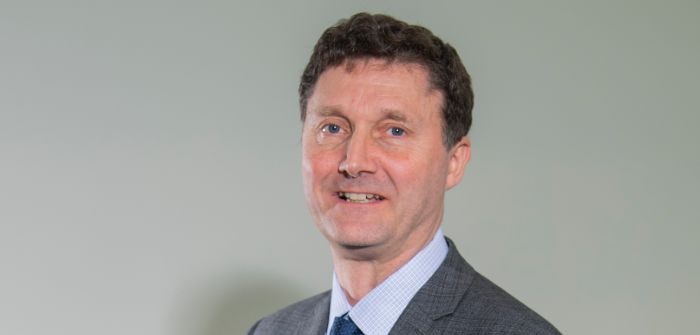ATTI interviews Sprint Power’s chief engineer for battery systems, Steve Doyle, about the best and worst aspects of his job, and the latest challenges in engine research and development
What career did you want when you were growing up?
I wanted to be either an engineer or an architect. As a young man, I felt it was a long process to become a qualified architect, so I took the engineering route. I had an interest in mechanical engineering and its diversity, feeling it offered greater opportunities to combine work with studying to be an engineer.
What was your career path to get to where you are now?
Having progressed at school and college, I was very fortunate to secure a graduate apprenticeship with the Dowty Group while doing a mechanical engineering degree at Coventry Polytechnic. This four-year course enabled a ‘year out’ from academia to work in industry – a combination that provided an all-round grounding in engineering in a diverse aerospace group. From there I joined Dowty Rotol, progressing to the position of design engineer for Dowty Aerospace Propellers.
I joined Lotus Engineering in 1994 as a senior powertrain engineer to expand my design experience – a position that spanned six years and saw me work alongside GM, Opel and Saab engineers on a new global engine. In 2000 I was promoted to executive powertrain engineer, a role I thoroughly enjoyed. That included responsibility for project managing, designing and building three electric sports cars and two hybrid vehicles. As a result of those projects, in 2009 I took on the role of chief engineer for hybrid and electric vehicle integration to grow a new department and deliver vehicle electrification projects. Five years later it was time for a change, so I joined Ricardo as product group head of hybrid and electronic systems. In January 2020 I joined Sprint Power as chief engineer for battery systems to help grow a new company and team to design, develop and manufacture battery and electronic systems.
If you had to choose one career highlight, what would it be?
The most rewarding moment of my career was putting the L850 cylinder head into production as the powertrain design and release engineer at Lotus Engineering. Working to the GM four-phase process
and QS9000 standards, alongside GM, Opel and Saab engineers, I ensured the cylinder head, cam cover and valvetrain were fully validated, approved production tooling and manufacturing, resolved manufacturing and development concerns, and managed client, manufacturing, supplier and development design changes. It was an epic project, with client and supplier liaison across the USA, Canada and Europe.
The role I have enjoyed most so far was being chief engineer for hybrid and electric vehicle integration at Lotus Engineering. During this period I helped develop a new department, providing technical direction and leadership to the engineering team, as well as developing client proposals and delivering projects on fuel cell, hybrid and electric vehicle technology. Some of the standout projects during that time included the Electric Europa, Proton EMAS, Electric Rolls-Royce, 414E hybrid Evora, the Infiniti Emerg-E and a grid reinforcement project using second-life EV batteries.
What would be your dream powertrain to develop – specs, systems, design, technologies?
Having worked on ‘conventional’ ICEs, hybrid technology and battery-electric powertrains across many vehicle types, I honestly can’t say I have a preference for systems or tech. What I do enjoy is working on advanced, next-generation and cutting-edge technologies and being able to bring those new ideas, concepts and approaches into vehicle demonstration and production.
In your opinion, what are the best powertrains to have been developed in the last 100 years?
Picking the best engine or powertrain is almost impossible, but the most notable developments for driving change in the auto industry include Toyota introducing mass-market hybrid vehicles (Prius 1997) and Tesla shaking the automotive space into taking battery-electric vehicles seriously and breaking the mold on how a car company can operate (Model S 2012).
Do legislators help or hinder your work?
Both! New legislation is driving change and shaking up the industry, enabling the further development of hybrid and electric vehicles and providing opportunities to innovate. On the flip side, however, it is making the task of engineering the next generation of vehicles more challenging and more costly.
What is the biggest challenge for Sprint at the moment?
We have seen a lot of growth in the last 18 months and we see that continuing through 2021. One of the big challenges is continuing to recruit the high quality of engineers that we have done so far as we grow even further, while maintaining the team dynamics that have been so important to us in successfully delivering our current projects.
What was your first car and what do you drive now?
VW Beetle, back in the days when you did your own maintenance – repairing bodywork and doing the type of tinkering that involved rebuilding the engine. I still have my wife’s first car – a Morris Minor – safely tucked up in the garage. Now I drive a BMW 2 Series Active Tourer, a sensible family car.


